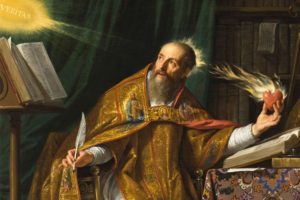It was my privilege to join Julie Roys and Timothy George on Saturday to discuss the question of whether Protestants should give more attention to the Blessed Mother. Here is the audio recording, if you’re looking for something to pass through your earbuds when you’re exercising.
Two takeaways. First, Protestants will find in Mary an inspiring example of faith. I personally marvel at the thought of a 13-15 year-old-girl about to give birth, leaving her kin to travel over 70 miles to Bethlehem. Keep in mind, unlike today, men of the first century (such as Joseph) were entirely uninvolved in labor and delivery. Culture norms prevented them from gynecological discussion, to say nothing of participation. It was one’s mother, mother-in-law, and sisters who delivered the baby. Mary, therefore, leaves her entire support system in reliance upon the Lord. Here is how Andrew Peterson captures the idea in his song, “Labor of Love”
It was not a silent night
There was blood on the ground
You could hear a woman cry
In the alleyways that night
On the streets of David’s town
And the stable was not clean
And the cobblestones were cold
And little Mary full of grace
With the tears upon her face
Had no mother’s hand to hold
Yes, we should celebrate God’s grace to Mary, which found expression in her courageous faith. But we must do so in a way that is biblically chaste—in a way that properly delineates Scripture from religious tradition. And that leads to my second observation.
Ryan Reeves, wrote a stimulating article for the Gospel Coalition titled “Michelangelo, the Pietà, and Bad Lighting.” He explains how the Vatican has elevated Michelangelo’s Pietà, placing it on pedestal, and projecting light upon Mary from below. This has the effect of making Mary the central part of the portrait.
Originally, however, the Pietà was not on a pedestal, but, rather, on the floor. It was set in a rotunda in Old St. Pete’s, illumined from above. Such seemingly unimportant details make a profound difference. In 1964, when the Pieta went on tour to the NY World’s Fair, the lighting once again shone down on it from above. If you look at photos of the Pietà in that setting, you immediately see the difference. Jesus is stunningly illumined. Mary’s face is somewhat obscured by a shadow and it appears that she is upholding her Son for onlookers to consider.
The original setting of the Pietà featured Christ as the supreme figure, the centerpiece, the crucified Savior whom Mary’s soul sought to magnify from his conception to his death. In this light, I think the Pietà poses a crucial question to the church:
To what extent do we live to magnify the crucified Savior? This, I would suggest, is Mary’s question to us.





